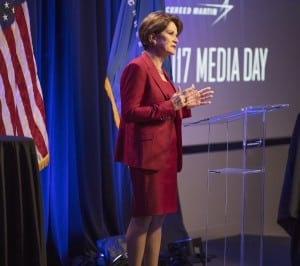
Defense budget cuts and an ongoing series of stopgaps spending measures is hollowing out the U.S. defense industry as much as Pentagon leaders accuse funding uncertainty for threatening military readiness and modernization, according to Lockheed Martin’s [LMT] chief executive.Speaking to the Reagan National Defense Forum in Simi Valley, Calif., on Dec. 2, CEO Marillyn Hewson said a recent history of anemic defense budgets has driven many second- and third-tier contractors from the defense sector. That has driven down competition and…

 By
By 











